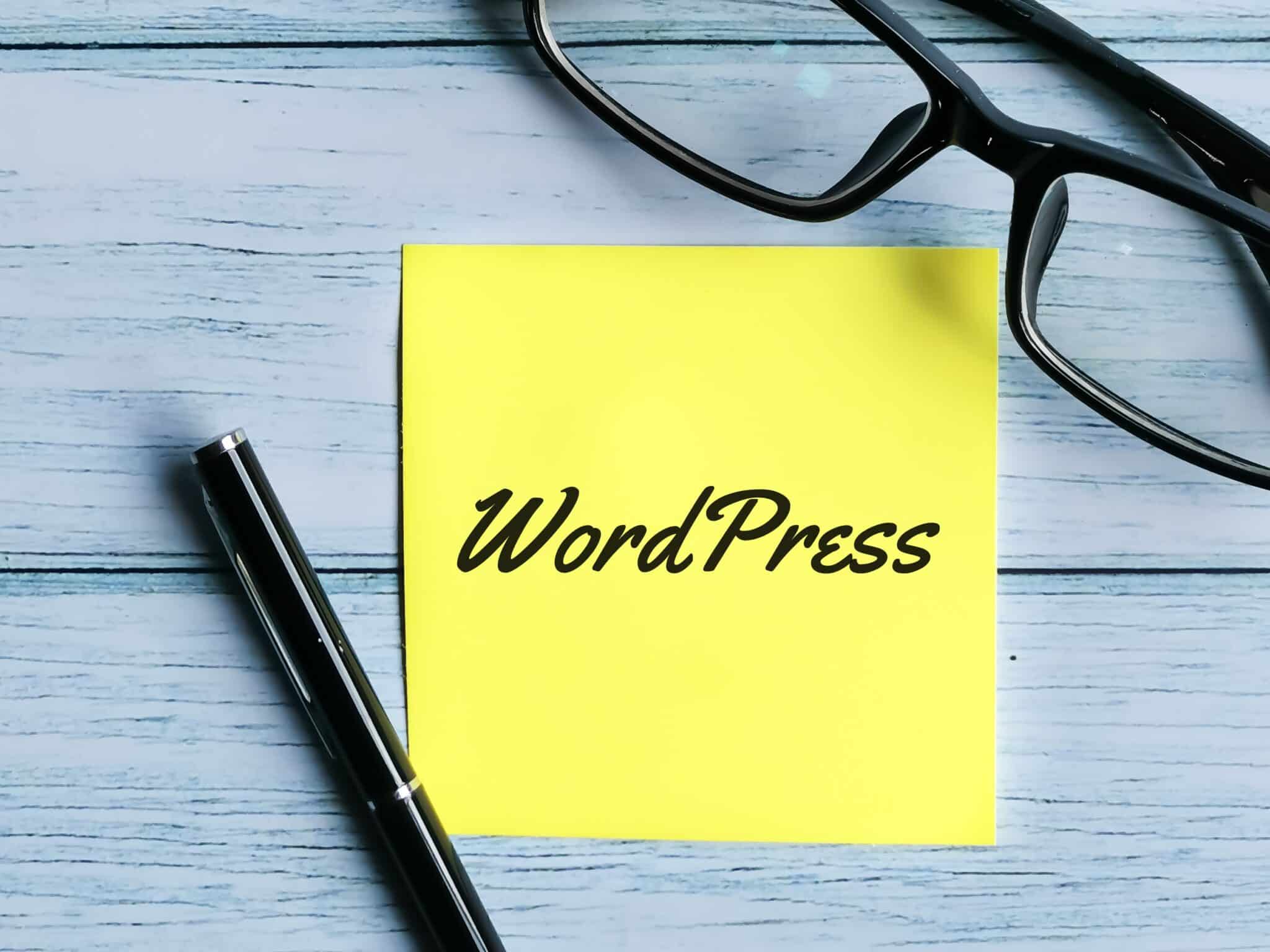Build a Professional WordPress Website in Minutes - No Coding Required!
Picture this. You are a small business owner, eager to expand your reach on the digital map, and you stand before a blank canvas - your soon-to-be website.
But there's one problem: you don't know how to code. The thought of HTML and CSS ties your stomach in knots! Sounds familiar?
Don't worry, help is at hand! Leave those frets behind because we're about to introduce an empowering tool that will allow anyone, yes anyone – even those without programming experience - to build a sleek, professional WordPress website within minutes.
Say goodbye to complex codes and high developer fees. Dive into our comprehensive guide and unveil the secret to creating your dream website without breaking a sweat or the bank!
Yes, WordPress is an excellent website builder with a user-friendly interface and a wide range of customization options.
With its drag-and-drop simplicity, mobile-friendliness, and SEO-friendly tools, users can create professional-looking websites without needing any prior coding experience.
Furthermore, WordPress offers expert support from Happiness Engineers and hundreds of different designs for any website.

Understanding WordPress Website Builder
If you're looking to build a website without any coding knowledge, WordPress is the perfect platform for you. A WordPress website builder can help you create a professional-looking website in minutes, and with drag-and-drop simplicity, it's easy for anyone to use.
With the WordPress website builder, you don't need to write a single line of code. Instead, you can simply choose from one of the many pre-designed templates that come with the platform and customize them to your liking.
This allows you to focus on content creation and design rather than worrying about technical details.
An important aspect to understand about WordPress is that it is a content management system (CMS). This means that it has a backend where users log in and manage their content.
When creating your website, you will have access to your own backend where you can make changes, add new pages, or upload new content.
As an aspiring blogger or small business owner who wants to showcase your expertise, using the WordPress website builder may seem daunting at first.
But once you get started with the platform, it quickly becomes apparent just how simple it really is and how much time it can save you when compared to traditional web design methods.
One of the great benefits of using the WordPress website builder is that it gives users complete control over their websites.
Unlike social media platforms like Facebook or Instagram, where rules and algorithms can change overnight without warning, building a WordPress site means that you own all aspects of your online presence.
Benefits of Using WordPress Website Builder
The benefits of using a WordPress website builder are numerous. In addition to its ease-of-use and flexibility, other advantages include mobile-friendliness and SEO-friendly tools.
With more people accessing the internet through their mobile devices than ever before, having a mobile-friendly website is crucial for success.
Fortunately, WordPress makes designing responsive websites simple by allowing users to preview their site on a mobile device.
Additionally, WordPress comes with built-in SEO tools that can help boost your website's visibility in search engines.
From optimizing page titles and meta descriptions to adding alt text to images, the platform provides basic SEO features that are easy for anyone to use.
Another major benefit of using the WordPress website builder is its ability to integrate with various services such as Eventbrite, Mailchimp, and YouTube.
This allows you to seamlessly incorporate popular marketing tools into your site without having to do any additional coding.
For instance, if you want to create an email list for customers interested in your products or services, you can easily integrate with Mailchimp through WordPress and start collecting email addresses right away.
This can help you build a community around your brand and keep customers engaged over time.
Some may argue that using a website builder like WordPress limits creativity since users are confined to pre-designed templates.
However, with over 60 styles available on WordPress, there are plenty of options for customization and personalization.
In the next section, we'll explore how building your WordPress website step-by-step is within reach even without any prior experience in coding.
Time-Saving Editing Features
As a business owner, you may have limited time to work on your website. You want to get things done quickly without compromising the quality of your content.
Luckily, WordPress website builder comes with a range of time-saving editing features that can help you create professional-looking websites in less time.
One of the most significant time-saving features is the drag-and-drop interface. Instead of having to write code from scratch or learn complex website-building tools, WordPress lets you take ready-made building blocks and move them around on your page using your mouse.
This allows you to see exactly how your site will look in real-time as you make changes.
Another useful feature that saves time is the undo and redo buttons. If you make an error while editing, these buttons enable you to go back and forth on any changes made without having to start all over again.
You also have access to revision history that allows users to restore previous versions of pages and posts.
Does text editing slow you down when creating content? The built-in spelling and grammar checker will save you hours proofreading your work.
It’s essential for maintaining high-quality standards and ensures your website content looks professional.
With all these fantastic features that allow pages and posts customized design choices with minimal effort, WordPress really makes its name as the go-to website builder for those who value their time.
- As of 2023, WordPress powers approximately 43% of all the websites on the Internet.
- According to a 2023 survey by W3Techs, WordPress dominates with a 64.8% share in the CMS market (content management system), far ahead of its competitors.
- A study by web technology surveys found that among all websites using a website builder technology, WordPress has a market share of 90%.
- As a business owner, using WordPress for website-building can save you valuable time and effort. With its drag-and-drop interface, undo and redo buttons, revision history, and built-in spelling and grammar checker, creating professional-looking websites becomes easier.
This platform provides options for customized design choices with minimal effort, making it a preferred choice for those who value their time.

Building Your WordPress Website Step-by-Step
Now that we have had a glimpse into the time-saving features offered by this website builder let's dive into how you can build your WordPress website step-by-step.
After logging in to your new account, choose from one of the 60 templates available, depending on what type of site you want to create.
Want a blog? A business landing page? As soon as you’ve selected a preferred one, you can begin to customize your design with the customizable features available on that template.
After selecting your preferred template, it's time to start adding pages and content. WordPress allows you to create an unlimited number of pages and sections to your website.
With their drag-and-drop page editors, you can visually create a page with multiple blocks depending on what you need for your design.
Critically analyze what images you want to use on the site as they have a significant impact on user perceptions of your website. Are there any illustrations or pictures that relate well with the site vision?
Think about it this way – a recipe needs more than just ingredients. It also needs instructions and guidelines – like steps to follow, how much time each step takes, and other relevant notes.
Your website is no different! You need a plan – a website blueprint – where items are carefully laid out before building, ensuring maximum efficiency when building your website from start to finish.
As we have seen, creating a professional website has never been easier thanks to the powerful WordPress website builder.
By following these steps, anyone can efficiently develop an incredibly impressive online platform for showcasing one’s brand or business.
Choosing and Customizing Your Template
One of the most important decisions you'll make when building your WordPress website is choosing a template.
Your template determines the look and feel of your website, including color schemes, fonts, layouts, and overall design. With so many templates to choose from, it may seem overwhelming at first glance.
However, with the drag-and-drop simplicity of WordPress Website Builder, it's never been easier to customize your website.
For example, let's say you're building a website for your bakery business. You want your website to reflect the warmth and nostalgia of a cozy café while showcasing your delicious treats.
With WordPress Website Builder, you can browse through dozens of bakery-themed templates until you find one that fits the look and feel you want to achieve. Once you've chosen a template, simply click on it to bring up its customization options.
One of the benefits of using WordPress Website Builder is that there are endless customization options available to make your template uniquely yours.
You can change colors, fonts, images, backgrounds, layouts, and more with just a few clicks. This means you don't have to settle for a cookie-cutter website that looks like everyone else's – you can truly make it stand out.
Of course, some may argue that too much customization can be overwhelming for beginners who aren't familiar with design principles.
While this is a valid point, WordPress Website Builder simplifies the customization process by offering drag-and-drop functionality and pre-built sections that you can customize to fit your needs.
Additionally, there are countless tutorials and resources available online to help guide you through the process.
Think of choosing and customizing your template like decorating your home. Just as you choose paint colors and furniture to create a comfortable living space that reflects your personal style, choosing a template and customizing it helps create a website that represents your business and brand.
And just as you can always rearrange furniture or add new décor to freshen up your space, you can easily change the look of your website with WordPress Website Builder.
Once you've chosen and customized your template, it's time to start adding pages and content to your website.
Adding Pages and Content
Now that you have a template in place, it's time to start building out your website. This means adding pages and content that showcase your products, services, and mission.
Depending on the type of website you're creating, there may be different pages or sections you want to include. Here are some common pages that businesses typically include on their websites:
- Home page: This is the first page visitors see when they arrive at your website. It should provide an overview of what your business does and why someone should choose you.
- About page: This is where you tell the story of your business – who you are, what you do, and why you do it. You can also include team bios or other personal touches.
- Products or Services page: This is where you showcase what you offer. Depending on how many products or services you have, you may want to break this into multiple pages.
- Contact page: This is where visitors can find contact information for your business, such as an email address or phone number.
- Blog page: If you plan to create blog content (which we highly recommend!), this is where readers can find your posts.
Let's say you run a pet grooming business. You want to create a website that showcases your grooming services while providing helpful information for pet owners. You might create the following pages:
- Home page: Showcase pictures of happy pets post-grooming
- About page: Explain the history of your business
- Services page: Break down each service offered
- Contact page: Include a form for interested users to fill out
- Blog page: Share tips and tricks for grooming at home
One of the benefits of using WordPress Website Builder is how simple it is to add pages and content.
Once you've chosen a template and customized it, all you need to do is create new pages, and then add your content to those pages. You can easily drag-and-drop different page elements such as text boxes, images, and videos.
Some may argue that creating quality content is time-consuming and difficult. However, the benefits of having an informative website outweigh the time investment.
By providing valuable information about your business, products or services through the website, you provide critical information for potential customers before they choose to contact you.
Think of adding pages and content like writing a book. Your template is the structure of your book – where each chapter goes and how it looks on the page. The content you add tells the story of your business in greater depth.
Now that you understand how to choose a template and create pages, it's time to dive into optimizing your website for search engines and mobile devices.

SEO and Mobile-Friendliness with WordPress
Nowadays, having a visually appealing website is not enough. Your site must also be optimized for search engines and mobile devices. Fortunately, WordPress offers built-in tools to make your site SEO-friendly and mobile-responsive.
Let's say you have a website selling organic skincare products. You want your potential customers to easily find your site when they search for "organic skincare" on Google.
This is where WordPress comes in handy. With its powerful SEO features, it enables you to optimize your site's content, meta tags, images, and URLs for better ranking on search engine results pages (SERPs).
To start optimizing your WordPress site, you can install an SEO plugin such as Yoast or All in One SEO Pack. These plugins make it easy to customize your page titles, meta descriptions, and keywords.
You can also analyze your content's readability and keyword density to ensure it meets the best SEO practices.
In addition, WordPress offers mobile-friendly themes that automatically adjust the layout of your site to fit any screen size. As more people access the internet on their mobile devices, it's crucial that your site looks great and loads fast on smartphones and tablets.
By choosing a responsive WordPress theme, you can ensure that your visitors have a smooth experience no matter what device they use.
Think of your website as a storefront. You want people passing by to notice your products displayed in the window, come inside easily without any obstacles, and stay long enough to explore everything you have to offer.
If your storefront doesn't look attractive or accessible from outside or inside, no one will bother coming in or staying longer than necessary. The same goes for your website.
Now that you've optimized your site for search engines and made it mobile-friendly, it's time to publish it live for everyone to see.

Making Your WordPress Website Live
The final step in building your WordPress site is to make it live on the internet. This involves connecting your domain name, hosting service, and website files together.
Fortunately, WordPress offers multiple ways to publish your website, depending on your preferences and needs.
If you're using WordPress.com as your website builder, you can easily hit the "Publish" button to make your site live. However, this will only work if you have a custom domain name and a paid plan that allows for custom design and monetization options.
Alternatively, if you're using self-hosted WordPress (i.e., WordPress.org), you'll need to install a web hosting service like Bluehost or HostGator to store your website files.
Once you've chosen a hosting provider and installed WordPress, you can upload your website content via FTP or through the WordPress dashboard.
To ensure that your new website doesn't conflict with any existing content or URLs on the internet, it's essential to set up proper redirects and indexing.
This means configuring canonical URLs, 301 redirects, sitemaps, and robots.txt files to tell search engines how to index and treat your website pages.
Once everything is set up correctly, give yourself a pat on the back! You've successfully built a professional WordPress website without any coding required.
However, some people may argue that using a website builder like WordPress is not as customizable or flexible as coding from scratch.
While this may be true to some extent, it's important to remember that not everyone has the skills or resources to code their own website. Using a website builder saves time and money while still allowing for plenty of customization options.

